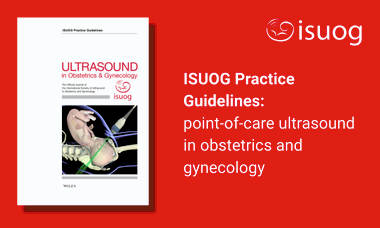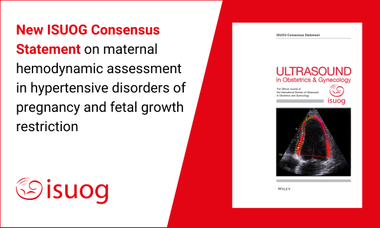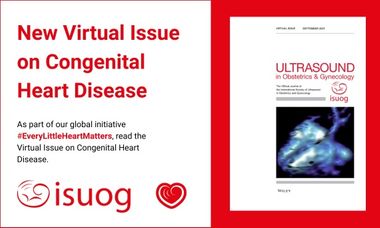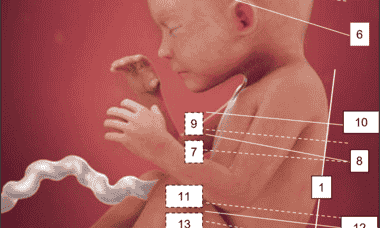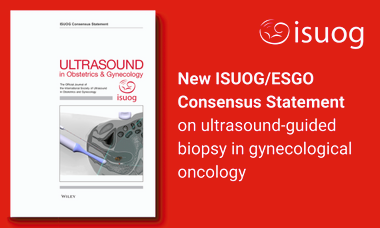New ISUOG Practice Guidelines: point-of-care ultrasound in obstetrics and gynecology
Read the new ISUOG Practice Guidelines on the use of point-of-care ultrasound (PoCUS) in obstetrics and gynecology in various clinical scenarios that may be encountered by different healthcare professionals.
New ISUOG Consensus Statement on maternal hemodynamic assessment
Read the new ISUOG Consensus Statement providing an update on the role of maternal hemodynamic assessment in hypertensive disorders of pregnancy and fetal growth restriction.
New Virtual Issue on Congenital Heart Disease
Read the Virtual Issue on Congenital Heart Disease, curated in support of the ISUOG Every Little Heart Matters campaign, featuring the latest research and expert guidance on prenatal screening, management, novel diagnostic methods and more.
New ‘How To’ article on applying the 20 + 2-planes method for identification of fetal abnormalities
Read the new ‘How To’ article, offering practical guidance on how to apply 20 + 2-planes method for identification of 65 fetal abnormalities during routine second-trimester ultrasound, as featured in ISUOG’s Basic Training program.
New ISUOG/ESGO Consensus Statement on ultrasound-guided biopsy in gynecological oncology
A new ISUOG/ESGO Consensus Statement provides accessible guidance to clinicians to help achieve the best standards of practice in ultrasound-guided biopsy.

